Plant Allium for Beauty and Garden Protection
If you’re looking for a solution beyond fencing to keep rabbits and deer away from your plants, onions can help. Allium is the genus for onion plants—all its species, cultivars, and varieties provide some protection. Planted around and among other edible and ornamental plants, they naturally repel rabbits and deer.
Some Alliums are delicious edibles, commonly planted in crop gardens. Examples include shallots, scallions, onions, leeks, chives, and garlic. While most Allium species are edible, there are look-alikes that are inedible and poisonous, so be careful when foraging.
Many ornamental Alliums, while not recommended for eating, have the benefit of being stunning, blooming additions to just about any garden. And they’re great as cut flowers, too. I’ve tried many of them in my USDA Zone 5A garden, to the point where I have Alliums blooming from May through October. Here are several examples, generally in order of their bloom times:
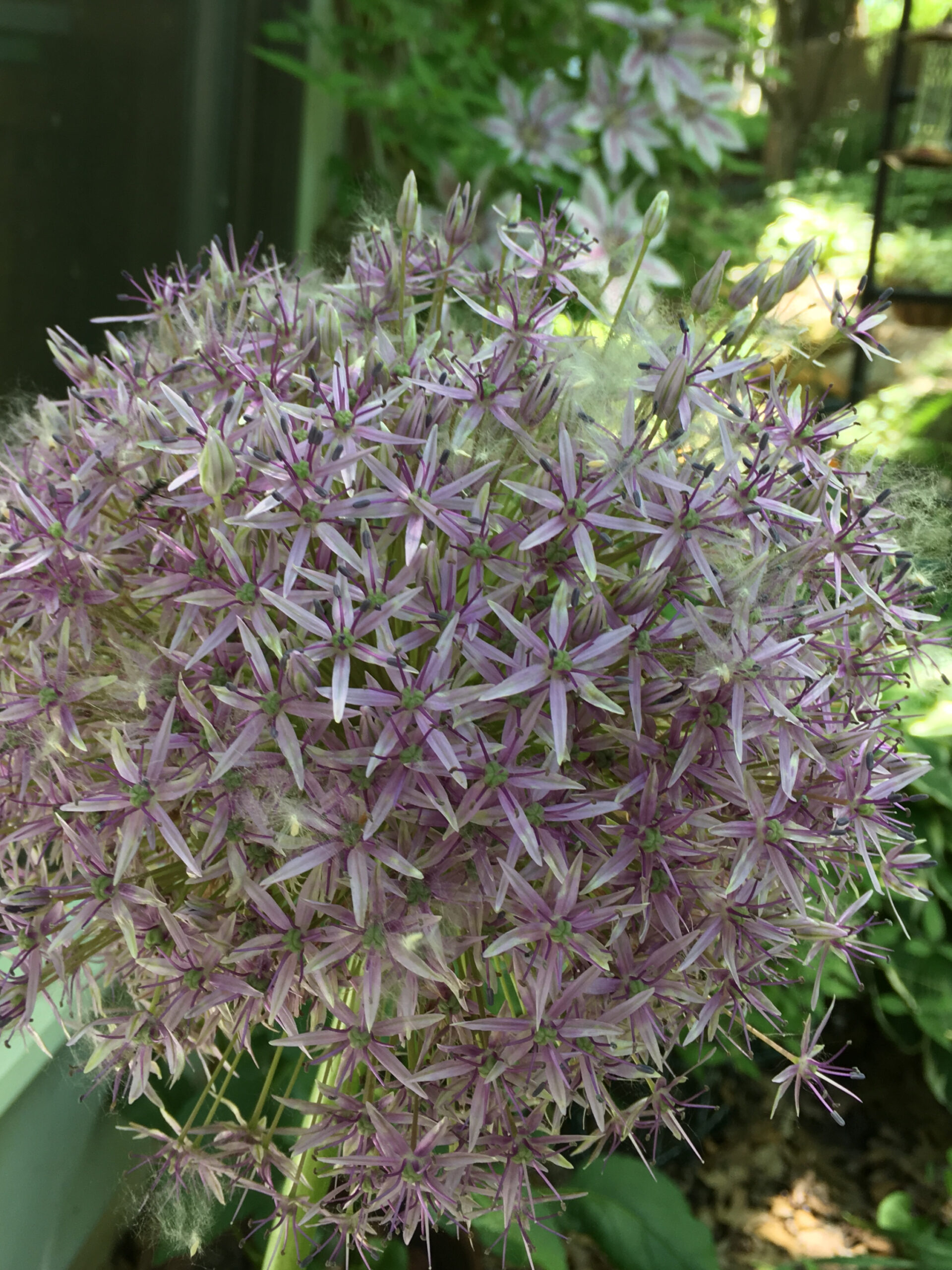
Allium ‘Globemaster’ (hybrid cross) pokes through the soil in late winter/early spring, along with the crocuses, snowdrops, and other early blooming plants. While it doesn’t bloom until late spring, it provides protection from rabbits and deer early in the growing season. (2-4 ft. tall; 1-1.5 ft. spread)
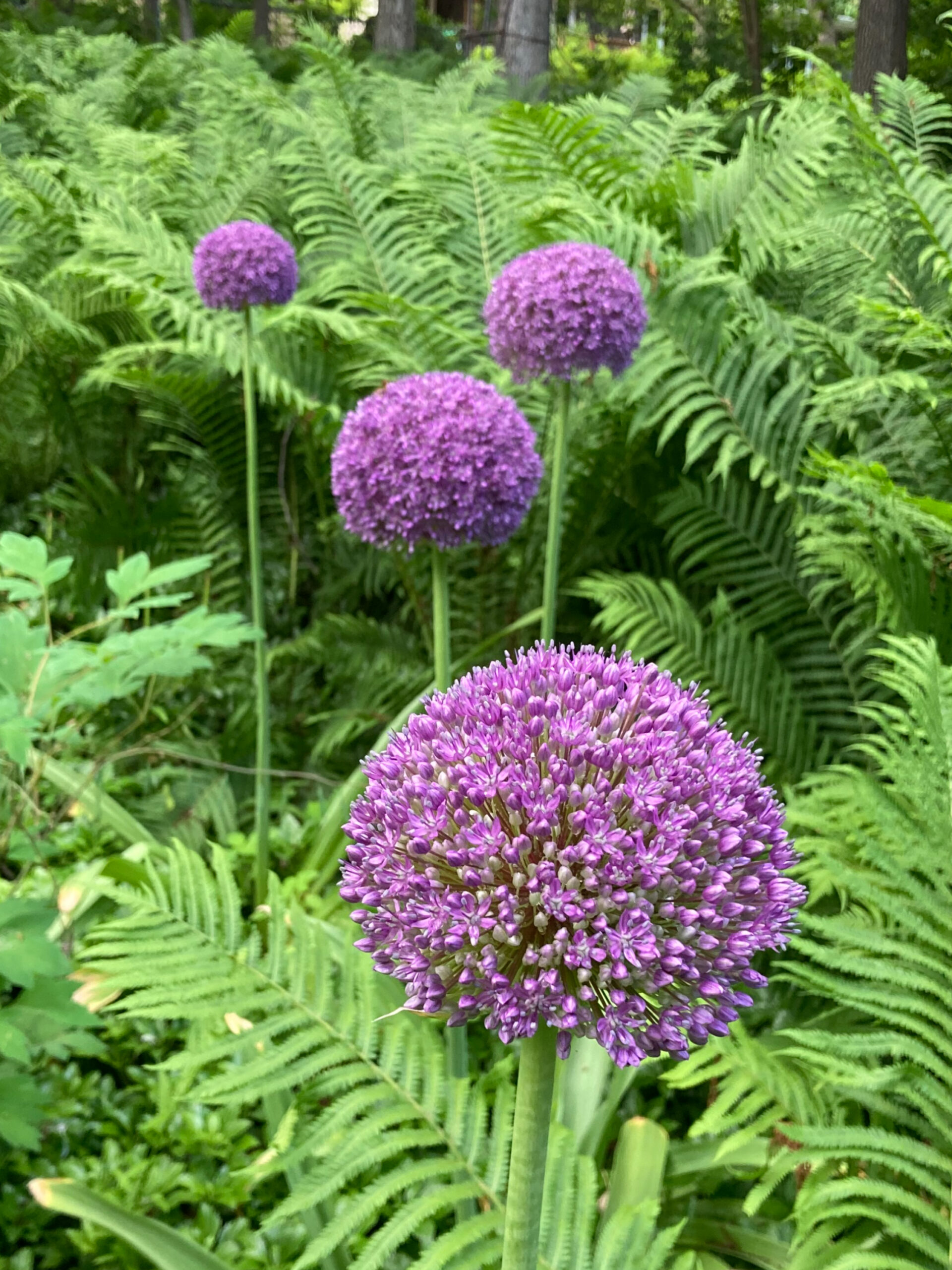
Allium ‘Ambassador’ (hybrid cross) follows in early spring, and tends to bloom in late spring/early summer. Its 6” spheres provide large, rich purple flowers with long bloom times of up to five weeks. Leaving the blooms in place when dried continues the ornamental value. (3-4 ft. tall; 1-2 ft. spread)
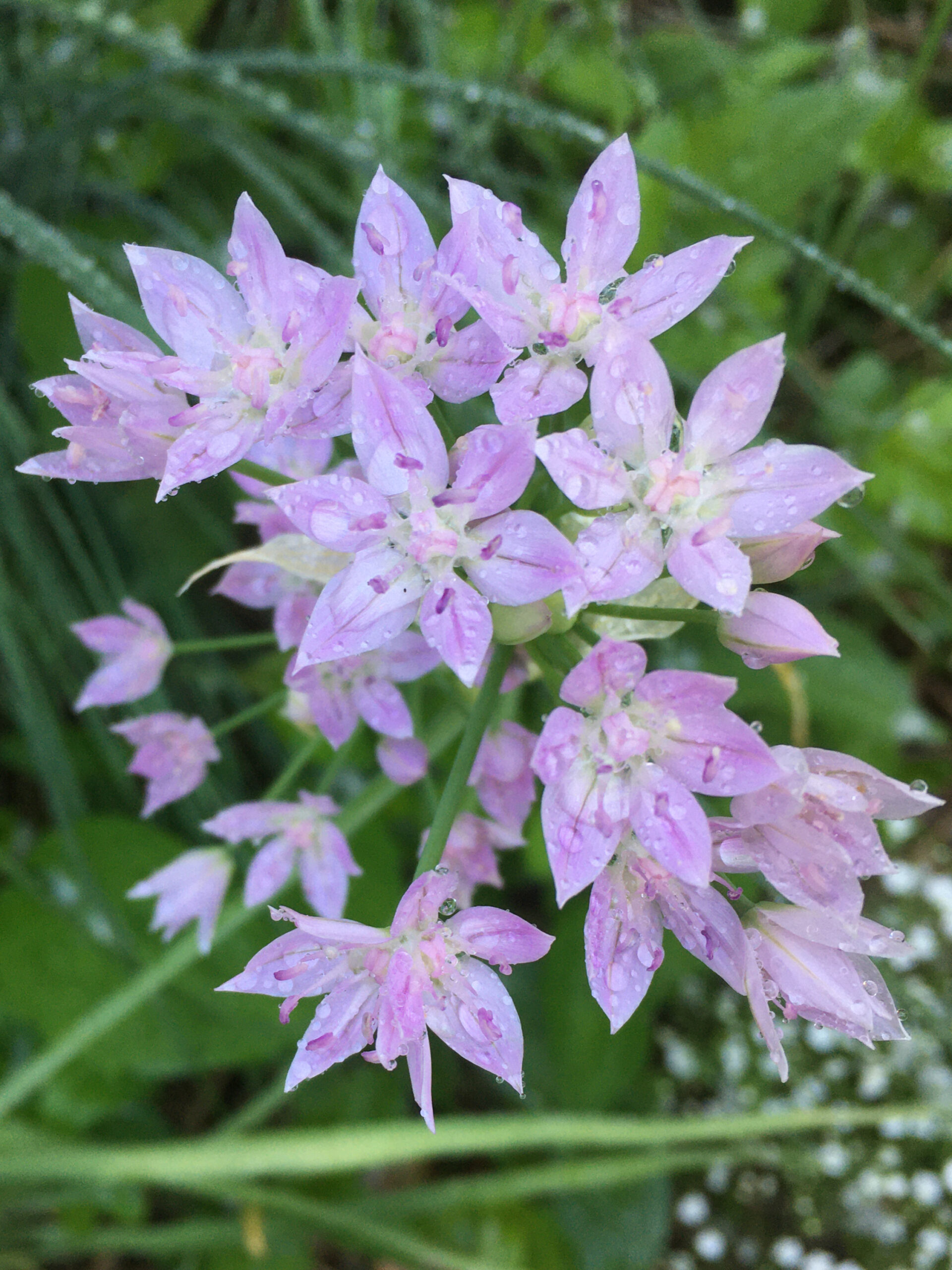
Allium unifolium is a lovely, petite bloomer that helps protect its edible and ornamental neighbors from damage. Unlike most Alliums, it grows well in partial shade. Also called one-leaf onion or American garlic, it’s a native, North American species of wild onion. (1-2.5 ft. tall; 1-1.5 ft. spread)
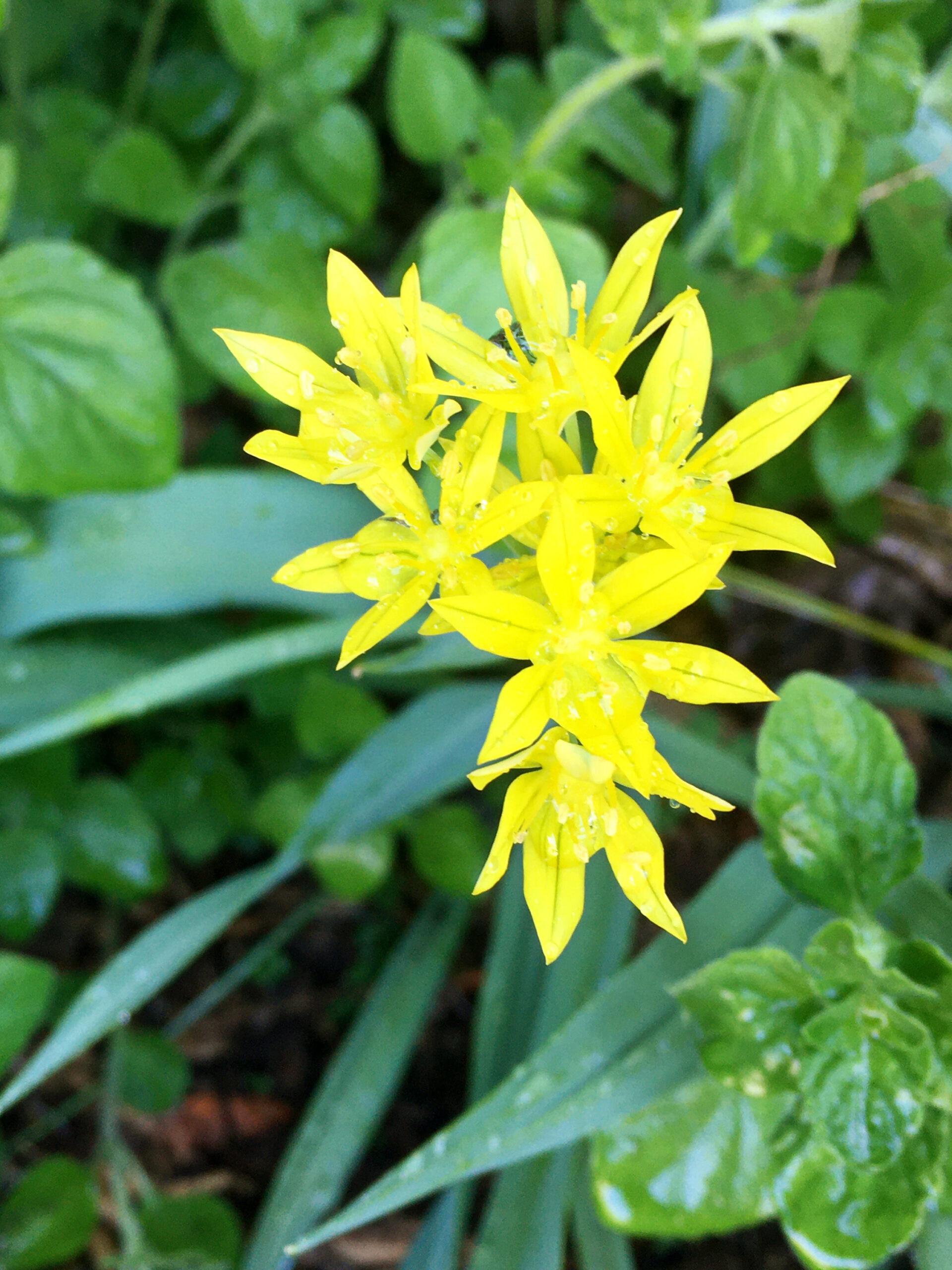
Allium moly, known as golden garlic or lily leek, bears a unique golden yellow color. A good choice for rock gardens or garden borders, this species tolerates a wide range of soils. Though not overly aggressive, it often naturalizes by offsets and self-seeding. (0.5-1.5 ft. tall; 0.5-0.75 ft. spread)
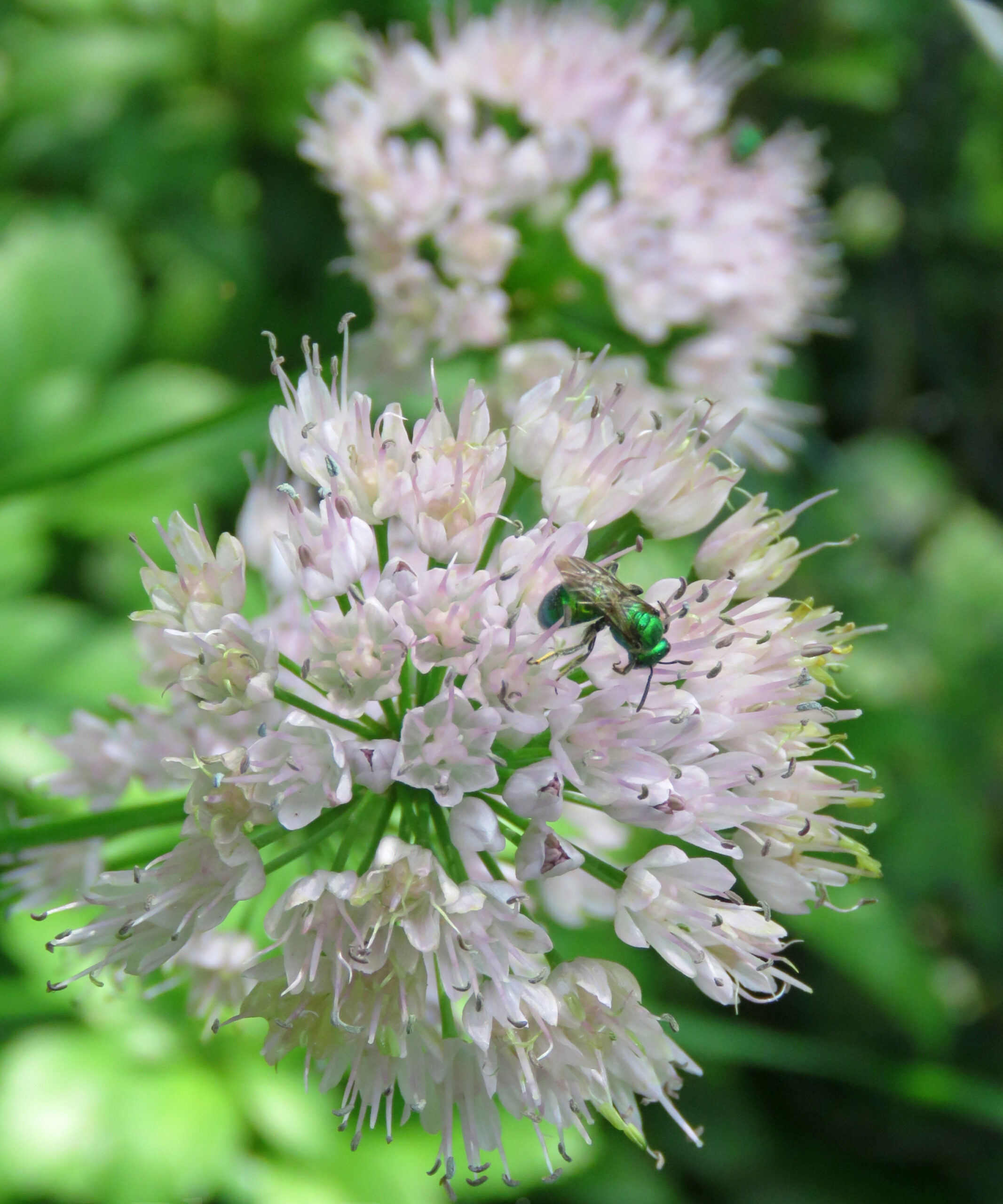
Allium lusitanicum ‘Summer Beauty’ blooms later in the season; generally mid- to late summer. It’s tolerant of partial shade, although it prefers sunny exposures. It’s also tolerant of drought, and it attracts many pollinators—from bumblebees to butterflies. (1-1.5 ft. tall; 1-2 ft. spread)
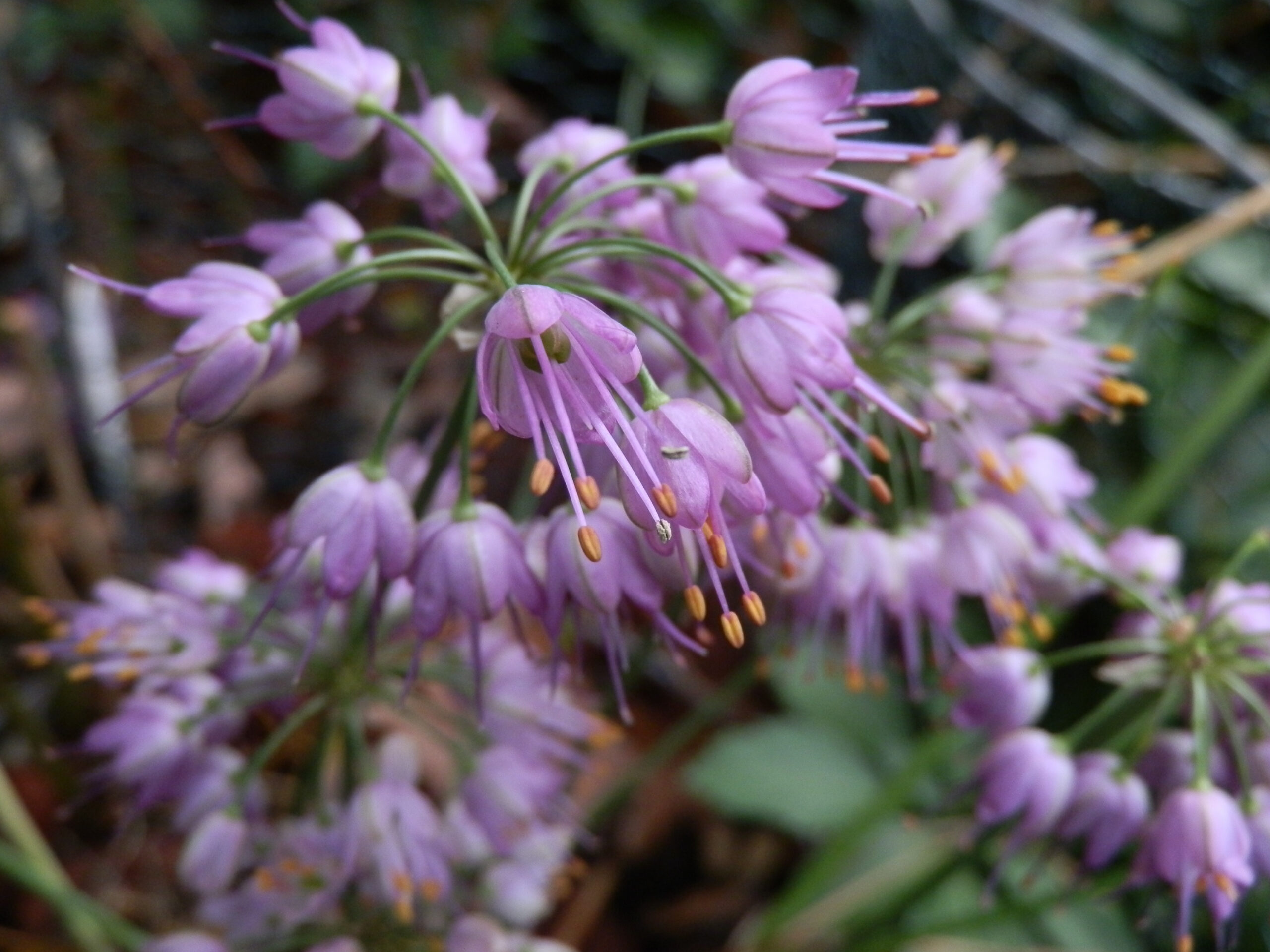
Allium thunbergii ‘Ozawa’ is the only Allium in my garden that has ever shown rabbit damage. I have mine caged to help prevent this, and the nibbling tends to occur as the blooms mature in mid-autumn. The dried/spent flowers of this delightful little bloomer even hold late autumn/winter interest into December. (0.5-1.5 ft. tall; 0.5-1 ft. spread)
There are hundreds of species of Alliums, six of which are native to Minnesota, according to Minnesota Wildflowers. Cultivars and varieties bring the numbers even higher, so the choices are expansive. Keeping a wide range of them with different bloom times also benefits garden pollinators.
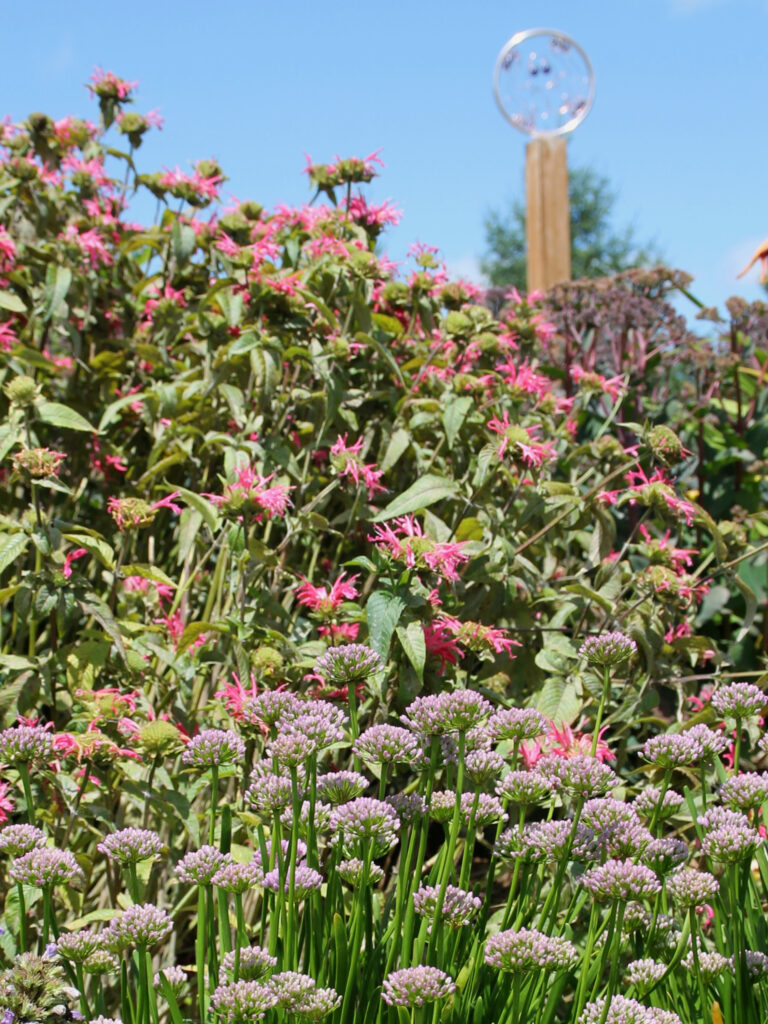
All these plants can help protect your garden from ravenous rabbits and deer. While most Alliums prefer sun or partial sun, you can plant them in gardens with deciduous trees that don’t leaf out until the Allium buds have formed.
While most ornamental Alliums are best planted in fall, they can be planted in spring, and then they’ll reappear and bloom the following year and going forward. Onion sets and many other edible Alliums can be planted in the spring.
Whether you choose to encircle your entire garden with scallions, plant tall ornamental Alliums at the back or center of a flower bed, or interplant shorter varieties here and there, you’ll take a step toward repelling hungry mammals and you’ll gain beautiful stalks and blooms in their own right.
Beth Stetenfeld is an organic gardener, native plant enthusiast and garden blogger and writer. She’s also a master naturalist volunteer and instructor.

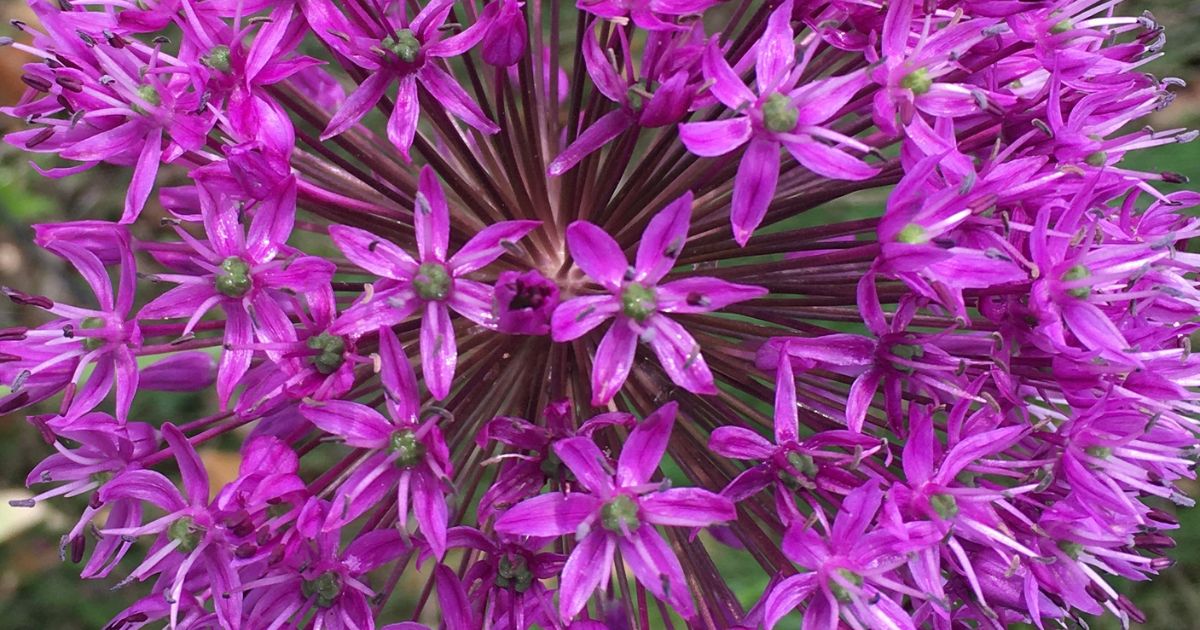
Great advice and such a treasured flower to see each spring and summer popping up!
Thanks for your feedback, Donna. Allium is such a shining star, isn’t it? So unique and eye-catching in the garden! Hope you have a few in your yard or neighborhood that you’re able to enjoy.